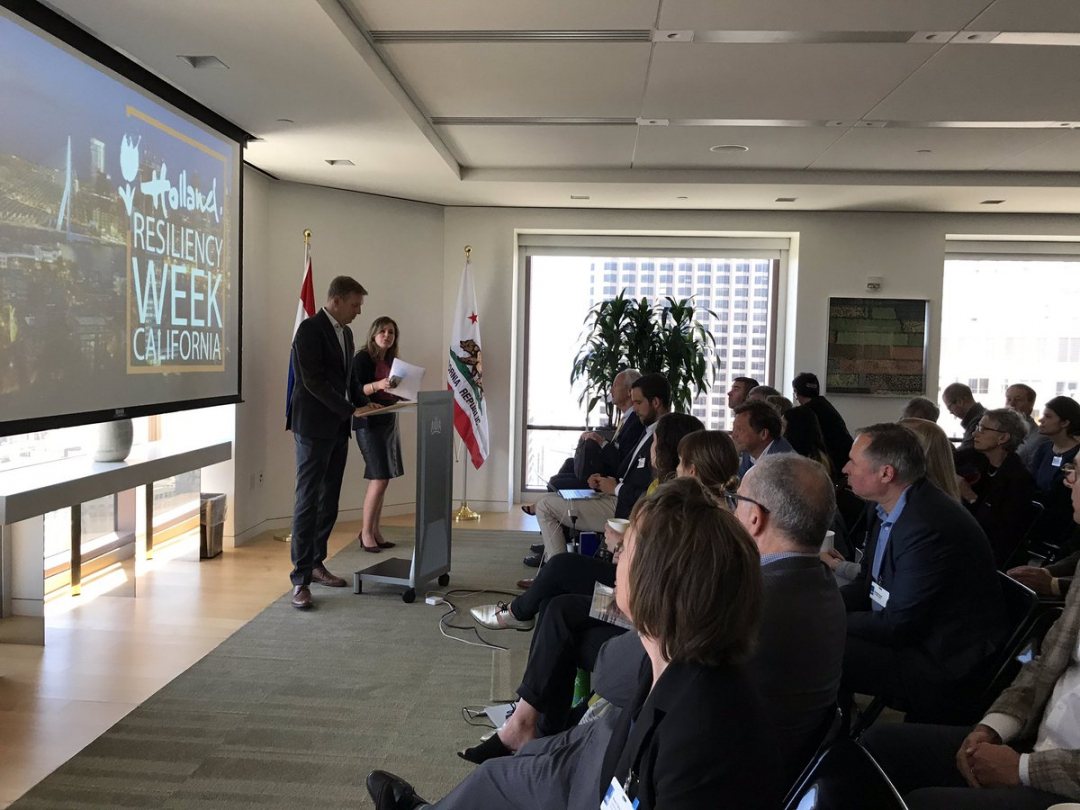Last week the Holland Resiliency Week brought together Dutch and American experts in Los Angeles, Sacramento and San Francisco to discuss the transformation toward sustainable and resilient cities.
Central on the agenda were California’s two prominent coastal cities: Los Angeles that is defining several infrastructure projects as it heads towards the Olympic Games of 2028 and San Francisco that seeks a way to counter the sea level rise in the San Francisco Bay. A cross cutting topic during the meetings was the need for a bold, and more overarching approach to water.Image

All-of-above approach
The need for such an approach is reflected in the recent publication of an executive order by state governor Gavin Newsom. His order aims at a climate-resilient water system. “California’s water challenges are daunting, from severely depleted groundwater basins to vulnerable infrastructure to unsafe drinking water in far too many communities. Climate change magnifies the risks”, said Governor Newsom on the occasion of the launch of the order.
Newson: “To meet these challenges, we need to harness the best in science, engineering and innovation to prepare for what’s ahead and ensure long-term water resilience and ecosystem health. We’ll need an all-of-above approach to get there”.
Ground-zero for sea level rise
At the seminar ‘Next steps for Bay Area’ in San Francisco on 1 May, the next steps were discussed in the preparations by the city for sea level rise and the effects of climate change.
The San Francisco Bay is considered as ground-zero for sea level rise as pointed out in the report ‘Too Little + Too Much’, presented during the Global Climate Action summit in September last year. The report was a spin-off of the Resilient By Design Bay Area Challenge, where 10 teams of international experts developed ideas for existing problems in the Bay Area. Many Dutch companies and experts were among those teams.
“What the Bay Area is missing is an overarching approach, one that spans from Napa Valley to San Jose”, said Dutch special envoy on water Henk Ovink, who pointed out the report was just the first step in presenting an overarching approach.
Wetlands and sea walls
Dutch and American experts discussed the next steps that are needed to transform the bay into a resilient area that’s not only climate-proof but also a great place to live in. Recently the ‘San Francisco Shoreline Adaptation Atlas’ has been released that divides the Bay’s 400 miles of shoreline into 30 zones, and recommends a range of options — from constructing wetlands to concrete sea walls — for each zone, based on local conditions.
More sustainable infrastructure
The seminar “Sustainable Cities, the Dutch Approach” brought together Dutch experts and Los Angeles stakeholders in resiliency and smart mobility to exchange challenges, solutions, and expertise. The city is heading towards the Olympic Games in 2028, and is determined to renew the infrastructure in a sustainable way. It aims to complete 28 projects, such as repairing and replacing aging infrastructure, and new projects regarding green infrastructure.
During the seminar Consul General Kunst called for the Netherlands and California to work together. “This ambitious agenda provides opportunities for more collaboration, focusing on infrastructure and mobility projects, delta technology, water tech and circular economy.”This news item was originally published on the website of US Embassy of the Netherlands

